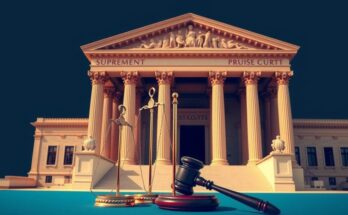As the New York City mayoral primary unfolds today, voters are gearing up to choose between Andrew Cuomo and Zohran Mamdani, among others. With past shadows haunting Cuomo and Mamdani presenting a fresh perspective on progressive politics, the stakes are high. Meanwhile, a blistering heat wave adds another layer to an already electrifying election atmosphere, raising questions on how this will affect voter turnout.
Cuomo vs Mamdani: Candidates Position Themselves Effectively
As the New York City mayoral primary draws near, all eyes are on the political drama unfolding on this hot Tuesday. Andrew Cuomo, the former governor, showed up to cast his ballot at a local high school with almost no notice, apparently opting to rank himself as his top choice and quickly drove off. In contrast, his main contender, Zohran Mamdani, an assemblyman with a bold democratic socialist platform, spent the day energetically campaigning, often joined by supporters and fellow candidates. It’s a pivotal moment for both in a race that some thought took a dramatic turn right at the end.
Heat and Uncertainty Dominate Election Atmosphere
Even though technically there are eleven candidates on the ticket today, it’s been a battle for the spotlight between Cuomo, who resigned in disgrace and Mamdani, still a relatively fresh face in the political landscape. Voters are feeling the weight of choice: some sources from both campaigns indicate a nervous tension as they head to the polls. For Mamdani’s supporters, there’s an air of disbelief and anticipation—they see a genuine chance at change and are excited about how the energy of his campaign might resonate strongly enough to surprise. On the other side, anxiety looms over Cuomo’s team, who thought they’d have a smooth path as frontrunners. The heat, both outside and within, is palpable.
Cuomo’s Campaign Focuses on Experience and Stability
Cuomo’s campaign mainly banks on showcasing his experience and competence, pushing back against far-left narratives that, in his view, threaten New York City’s structure. His endorsement by Bill Clinton last weekend adds weight to his argument, casting himself as the stabilizing force against what he describes as a radical left takeover in local politics. Cuomo criticises fellow Democrats for what he views as failures in leadership and governance—pointing to crime rates and societal regression. He paints a picture of competence and authority; supporters like Rep. Gregory Meeks back him up, hoping this campaign will attract national attention ahead of bigger battles in the future.
Mamdani Offers a Radical Shift in Political Thought
In contrast, Mamdani brings a fresh approach to the table, looking to speak to a younger generation disillusioned with conventional politics—a stark shift from the years of Cuomo’s governance. He champions progressive ideas like universal childcare and rent freezes, calling for a complete change in the way politics functions within the city. While some worry about his relative inexperience, Mamdani spins it as a clean slate, free from scandal and open to innovation. His statement that compromise leads to diluted results points toward an unapologetic approach that resonates with many voters who crave direct action and change.
Ranked-Choice Voting Adds More Complexity to Results
As polls close at 9 p.m. Eastern, the anticipation grows for election results, but New York’s ranked-choice voting system means clarity might take longer than expected. In the last mayoral primary, a narrow win went down in an exhaustive seven rounds, so a similar situation could easily unfold this time around. Strategies from candidates to maximise second-choice votes, like Mamdani and city Comptroller Brad Lander endorsing each other, are critical and might just tip the scales. However, voters unaccustomed to ranked voting might create unpredictable outcomes, sparking potential legal challenges along the way.
Extreme Heat and Voter Turnout Challenges
Adding an unexpected layer to this primary day is the extreme heat wave gripping the city, pushing temperatures above 100 degrees Fahrenheit. This may impact turnout significantly, particularly among the older population—who might, after all, opt to stay cool at home. The New York City Board of Elections planned ahead, distributing fans and water at polling spots to mitigate the situation. But questions linger: will logistical issues or equipment failures unfold during the heat? Many campaigns have shared their concerns, already worrying that weather could turn the election outcome into a misfit of complications.
Future Uncertain for Primary Winner and Nonstop Competition
Even if one candidate emerges victorious in the primary, the path to actual mayorship is anything but guaranteed. New York has historically swung between parties, with Republicans snagging five out of the last eight elections. Cuomo’s game plan includes securing a continual presence even if he faces a defeat Tuesday, while Mamdani has support lined up to ensure he stays relevant past the primary. The eventual Democratic nominee will not only battle against each other but also face Curtis Sliwa, the Republican candidate, come November, in a straightforward win-or-lose situation without ranked-choice complexities to cloud the vote.
What are the main differences between Cuomo and Mamdani’s campaigns?
While both candidates have strong support, their campaigns highlight very different approaches to governance. Cuomo emphasises experience and stability, while Mamdani champions radical change and progressive policies. Polls close at 9 p.m. Eastern, but results may take longer due to the ranked-choice voting system.
How does ranked-choice voting work?
Ranked-choice voting allows voters to rank up to five candidates in order of preference. If no candidate receives a majority of first-place votes, the last-place candidate is eliminated, and their votes are then redistributed until one candidate achieves a majority. Voters should understand ranking to maximise their choices.
Could the extreme heat impact voter turnout?
Yes, voter turnout can be affected by external factors like extreme weather. With predicted temperatures exceeding 100 degrees Fahrenheit, many older voters may choose to stay home, impacting the results. Campaigns are preparing for potential disruptions.
When will we know who won the primary election?
Forecasts suggest it might take at least a week until we see a clear picture of the primary results, particularly if significant legal challenges arise or there are issues with ballot counting. A major factor is whether any candidate can achieve a true majority of first-choice votes on the first run.
What issues are voters most concerned about this primary?
Cuomo faces significant scrutiny from voters over past behaviour and allegations, while Mamdani struggles with his inexperience and controversial statements. The outcome may hinge on how voters weigh these concerns when casting their votes.




